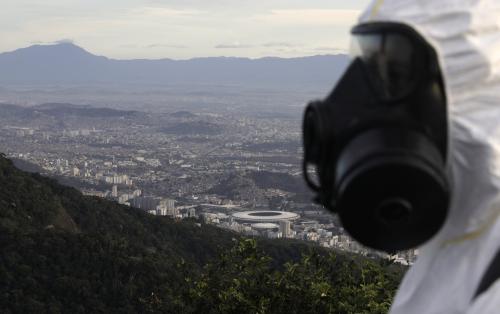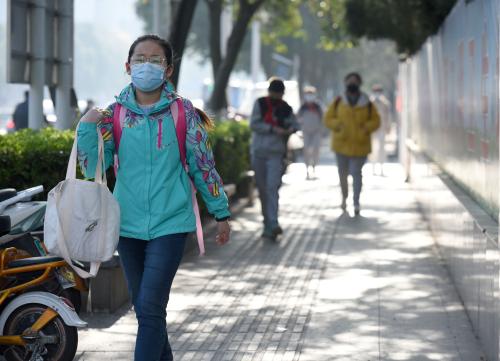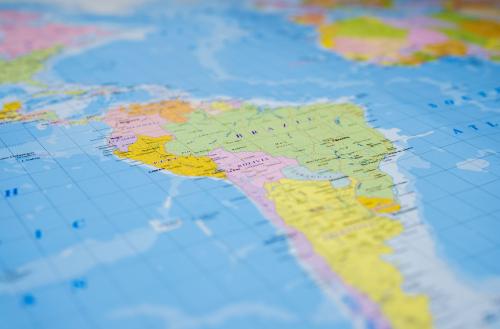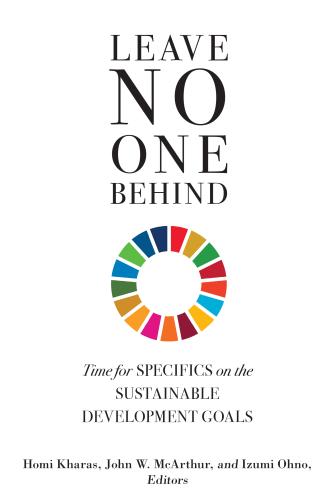This op-ed was originally published by Americas Quarterly.
The COVID-19 pandemic is placing Latin America at serious risk of unraveling the progress the region has made in the last decades when it comes to education. According to UNICEF, 95 percent of children are out of school in a region where social mobility coming from education is already low, and where equality of opportunity is rare. But the current generation of school children may—especially in low-income, less-educated households—be facing a future with the meager levels of education achievement last seen in the 1960s. Going backwards in education is not just bad for the children directly affected. Latin America’s future could witness losses in economic growth and increased political polarization as a result.
While schools shut their doors for children of all socioeconomic backgrounds, their ability to continue learning depends on their parents’ income and educational level. As in other regions of the world, high-educated parents have better access to internet and laptops, tablets, and so on, as well as the knowledge and non-cognitive skills to support their children’s homeschooling. They also have the economic resources to hire tutors and purchase the best online options for course materials. Children in low-parental education households, in contrast, may find it difficult if not impossible to continue their education at home due to lack of adequate equipment, connectivity and—above all—one-on-one coaching. Just as an example of such inequalities, the internet coverage for households whose head has less than secondary school in Bolivia, El Salvador, Honduras, and Nicaragua is around 30 percent while it is above 90 percent in families, within the same country, headed by adults with more than secondary education.
Children in disadvantaged households will end up with lower levels of learning and many might drop out of school altogether. This will result in lower social mobility and more inequality of opportunity in the future. Governments across the region have implemented a series of measures—whose scale varies significantly across countries—such as TV, radio, printouts, and online learning schemes, as well as income-support programs.
But these mitigation policies simply aren’t enough. Our projections, which are based on simulation exercises we explain in our forthcoming paper on the intergenerational effects of COVID-19 in Latin America, estimate that the likelihood of today’s students to complete secondary education in Latin America may soon drop from a regional average of 61 percent to 46 percent. (The working paper will soon be published by the Commitment to Equity Institute.)
This average, however, hides striking differences across countries and socioeconomic groups. While the impact of individuals from highly educated families is hardly affected, the probability of completing secondary school for individuals with low-educated parents is considerably lower in the post-pandemic, declining by almost 20 percentage points, from 52 percent to 32 percent. This low level of educational attainment for children of low-educated families was reported in Latin America for cohorts born in the 1960s. The sharpest decline is estimated for Brazil: 32 percentage points; the least dramatic, for Uruguay: 9 percentage points. In Guatemala and Honduras, the probability of secondary school completion of individuals from lower educated families might even fall below 10 percent. The gap in the likelihood of completing high school between children of low-educated families and children of high-educated families—already high before the pandemic—could thus rise significantly.
Can something be done to prevent this unequalizing force from happening? To soften the negative impact of school closures on children, governments are experimenting with ways of reopening them that are prudent from an epidemiological point of view. Reopening schools, however, is not enough now and it will not be enough in the post-pandemic period either. There will be a need to make up for the losses by increasing both the amount and quality of learning time once the pandemic is tamed. School systems will need to contemplate extended schedules, summer and after-school programs, and more personalized instruction. Efforts should also be geared to developing online and offline resources available for free and expanding connectivity to schools and other places so the resources can be downloaded at no cost. The focus should be on the most vulnerable children. That is, children in low-educated households as they are the ones who are likely to have lost more instructional time.
The remedial actions and rescue operations will require resources, especially financial resources. One key recommendation is for governments not to cut education spending when they face the inevitable need to reign in fiscal deficits (deficits that were not only acceptable but encouraged during the pandemic). In fact, if anything, fiscal resources devoted to education may need to rise. The challenge is so daunting that help will be needed from nonstate actors as well. Private philanthropy, the for-profit sector, and community-based organizations together with governments should launch a crusade to save the next generation of vulnerable children from falling behind.
The Brookings Institution is committed to quality, independence, and impact.
We are supported by a diverse array of funders. In line with our values and policies, each Brookings publication represents the sole views of its author(s).










Commentary
Op-edBack to the 1960s? Education may be Latin America’s most lasting scar from COVID-19
December 4, 2020